It has always been a dream of mine to have a small project studio in the house. However, this requires much more than a simple table, an audio interface and a few pyramid foam panels. Setting up a studio with good acoustics on only about 16 square meters is a particular challenge. Optimum utilization of space usually conflicts with optimum room acoustics.
Many people spend a lot of money on preamps, microphones, monitor speakers and cables, but then work in an acoustically unsuitable environment. If the acoustic parameters of the room are not right, even the best monitors cannot reproduce the audio material without distortion, which in turn leads to wrong decisions during mixing and mastering. Even an expensive condenser microphone will deliver a disappointing result in such an environment because uncontrolled reverberation and the associated problems in the frequency response will distort the recording.
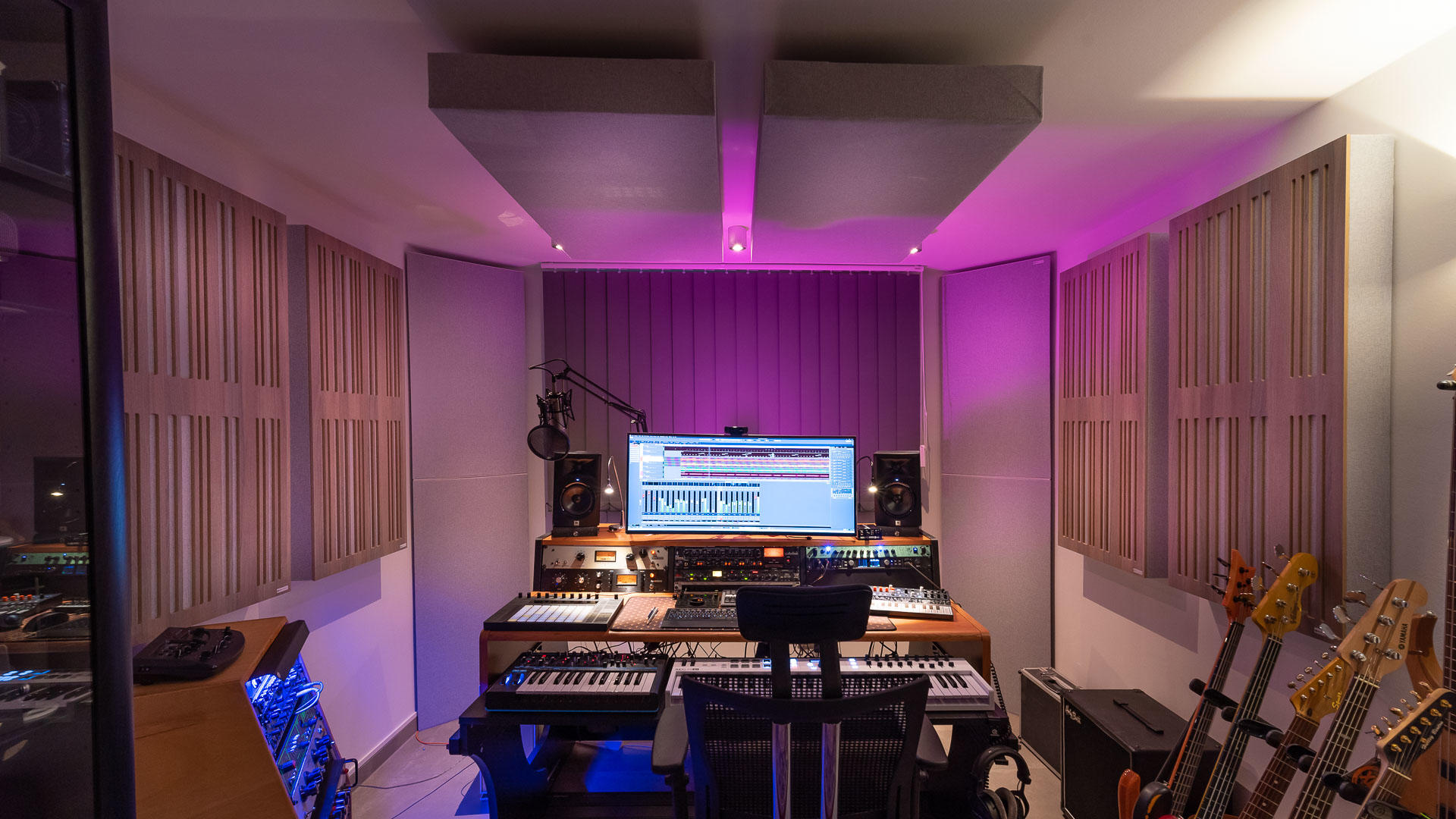
For vlogs, podcasts and tutorials, however, an acoustically optimized environment is a decisive quality feature and therefore not only affects musicians and producers. Home cinema also requires an optimal acoustic environment, and it makes no sense to buy hi-fi speakers for thousands of euros and then place them anywhere in the living room.
However, it must also be clear that an absolutely linear frequency response is practically impossible and not even necessary. The listening room is like an instrument with its own character. You just have to make sure that you don’t have any major problems or excessively long reverberation times.
Standing waves, reverberation and RT60 value
Small rooms are a particular challenge here, as standing waves are a problem practically everywhere. Room mode calculators, such as the one from Trikustik, help to provide an initial overview. Trikustik’s room mode calculator can also generate test tones that can be played back through your loudspeakers. If you haven’t done much research into room acoustics, you will be surprised at how much the volume of the individual test frequencies changes as you move around the room.
There will be places where the volume increases dramatically and just a few centimeters further on the sound often disappears completely. This is due to the reflections of the sound waves in the room. These cause the waves to overlap in phase in some places and thus increase in intensity, while in other places they overlap in antiphase and thus cancel each other out. You want to avoid both because it leads to a change in the frequency response in either case.
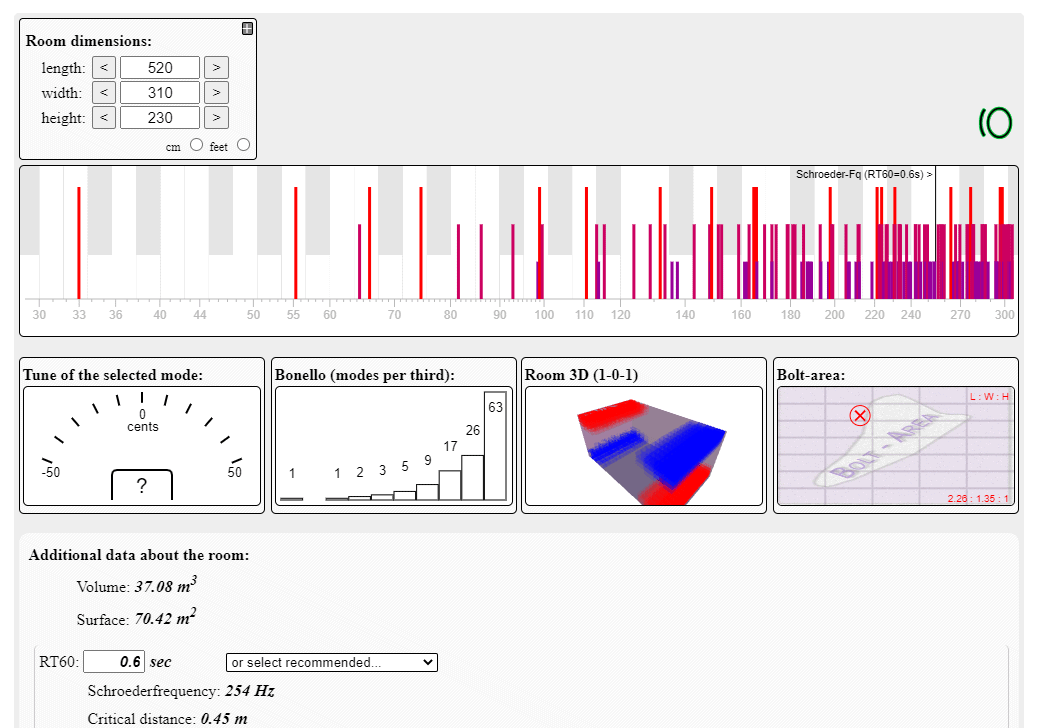
There are two important parameters in room acoustics: Standing waves, which can amplify or completely cancel out certain frequencies, depending on the listening location, and reverberation, which is caused by reflections from walls and furnishings. Both have to be balanced in such a way that the frequency response is as even as possible on one side. The reverberation is reduced to such an extent that the room sounds controlled but not dead.
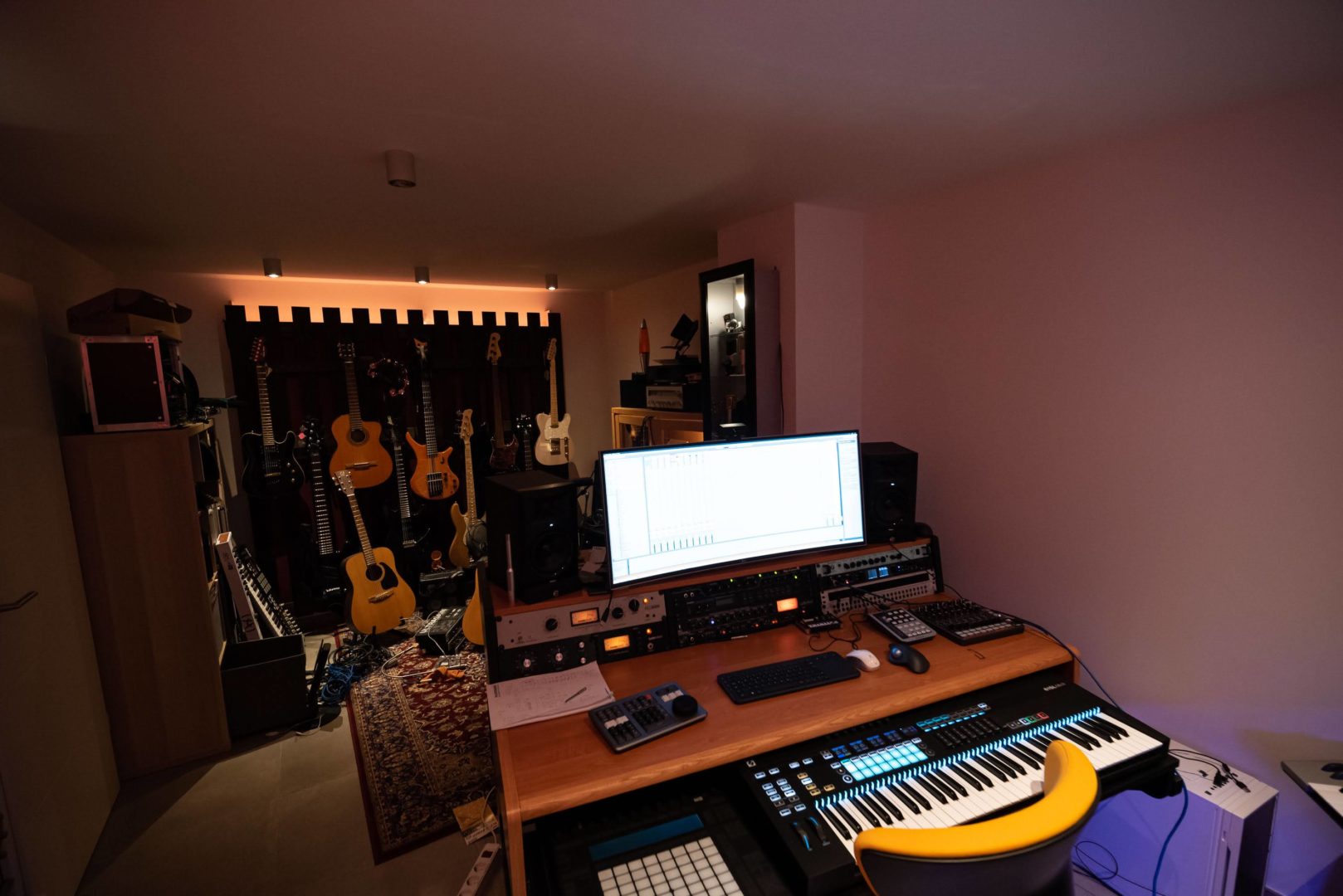
The future use of the room is also critical. For voice recordings, you want a room that is as “dead” as possible with as little reverberation as possible, and therefore you will use more attenuation here than in a control room. However, a home studio is often both a recording room for voices and instruments as well as a monitoring and control room. You therefore have to find a compromise between frequency response, reverberation times and set-up.
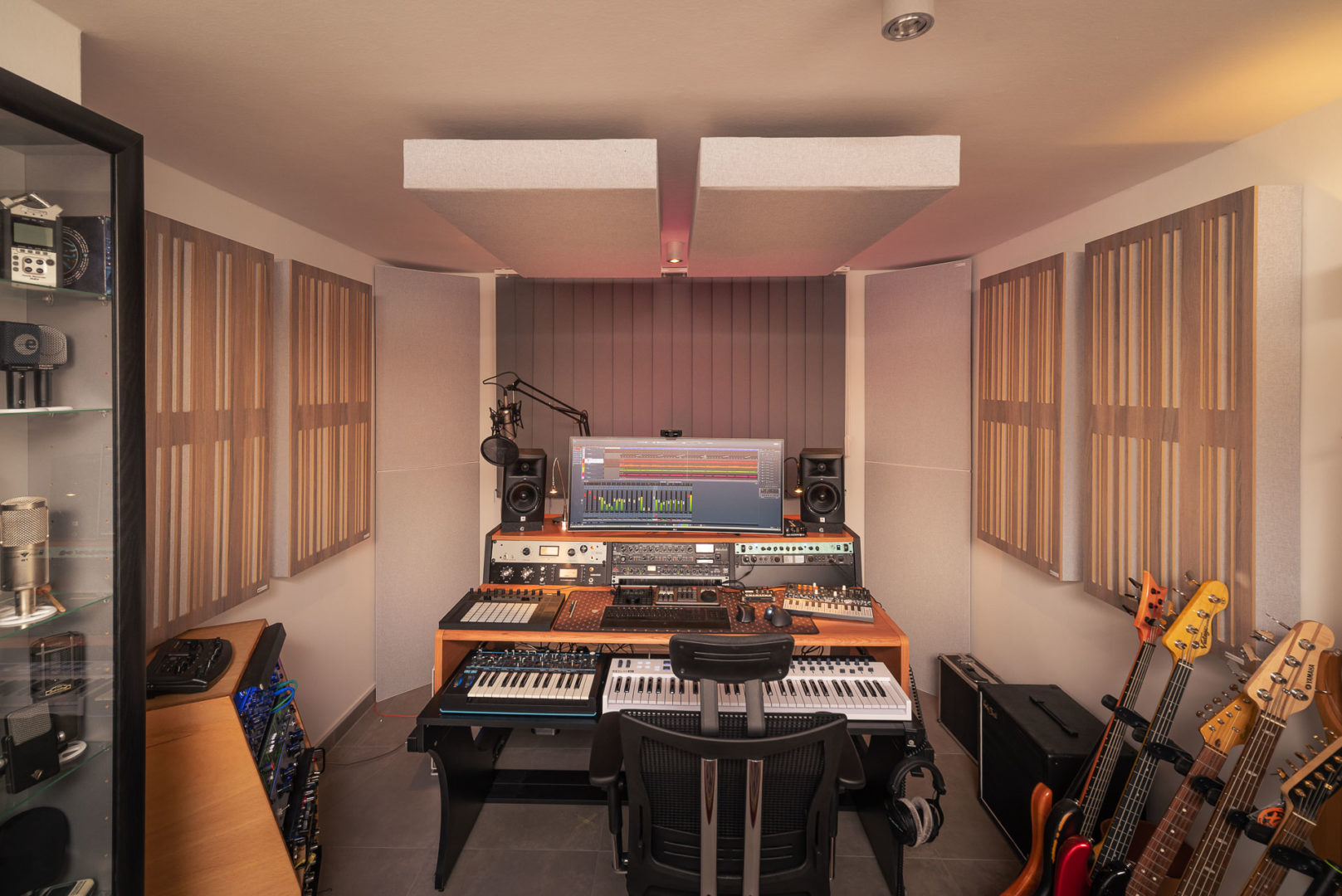
The reverberation is usually specified with the RT60 value. The RT60 value shows the time after which the reverberation has decayed by 60 dB. Alternatively, the T30 value is usually used here, from which the RT60 value is extrapolated, as otherwise background noise etc. would have too great an influence.
If this time is longer than 0.5 seconds, speech intelligibility suffers and the reverberation is also clearly audible in recordings. The aim is therefore to reduce the reverberation over the entire frequency range. A good average value is between 0.2 and 0.4 seconds, whereby the reverberation is typically higher in the bass range and 0.7 seconds is also perfectly acceptable here. In the treble range, however, it often drops sharply, as curtains and the air absorb high frequencies with short wavelengths disproportionately. Anything less than 0.2 seconds is considered “acoustically dead” and anyone who has ever spent time in an anechoic chamber knows how oppressive a room with practically zero reverberation can be.
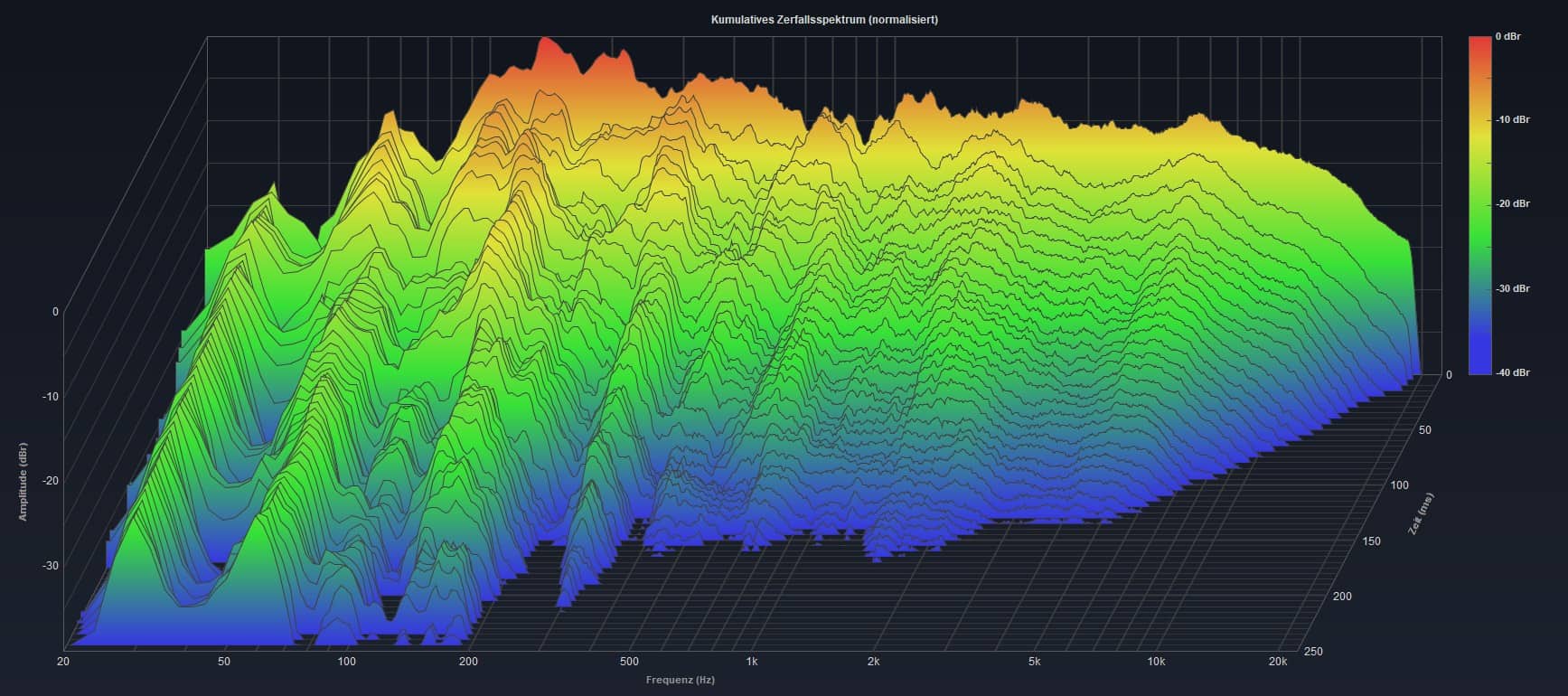
The European Broadcast Union (EBU) and BBC specify an RT60 value of 0.2 to 0.4 ms in the range from 200 Hz to 4 kHz for small listening areas. The frequency response should be in the range 250 Hz to 2 kHz at – 3 dB with a resolution of 1/3 octave.
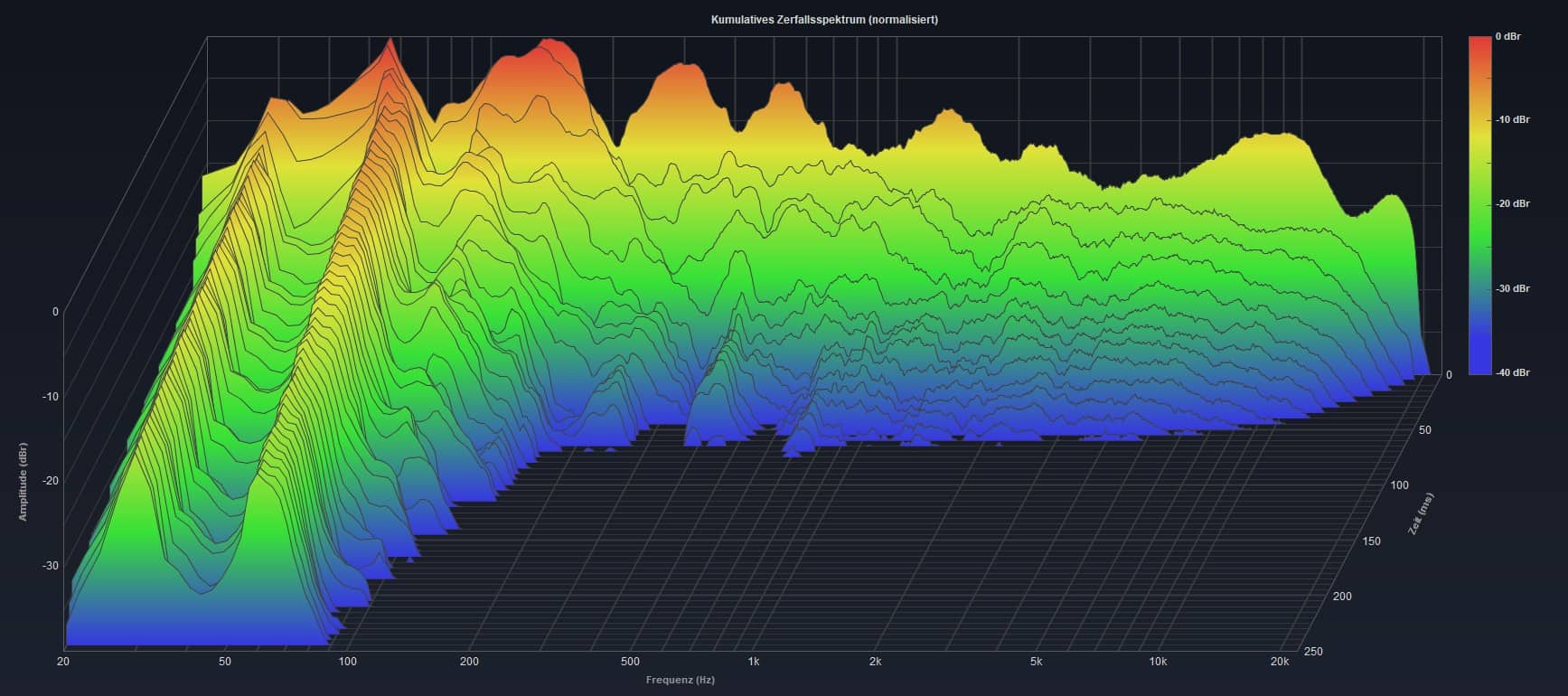
The optimum position for the listening position
The listening position should always be positioned so that the distance to the left and right walls is symmetrical. It should also always be at the end of a long side so that the sound waves from the speaker have to travel a long way backwards before they are reflected and thus attenuated.

The most important factor here is the position of the monitor speakers and the listening position. Before taking any measures, you should first find an area in the room that sounds reasonably balanced even without any acoustic measures and does not show any extremely pronounced problems caused by standing waves. This can be checked using measurement software such as Audionet Carma or the better-known REW Room EQ Wizardand a measurement microphone. Both applications are free, although Audionet Carma is a little easier to get started with.
Low frequencies have the most energy and the longest wavelength of several meters, which causes problems in small rooms in particular. Now you change the listening position to the front or back until you have found a compromise between the spatial conditions and the acoustic behavior of the room. Often it only takes a few centimeters to improve an overemphasis or cancellation simply by changing the position.
Suitable measurement microphones, such as the popular Behringer ECM 8000, are available for less than 40 euros. It is important that the microphone is set up on a stand at ear level at the planned listening position and that the microphone points upwards towards the ceiling.
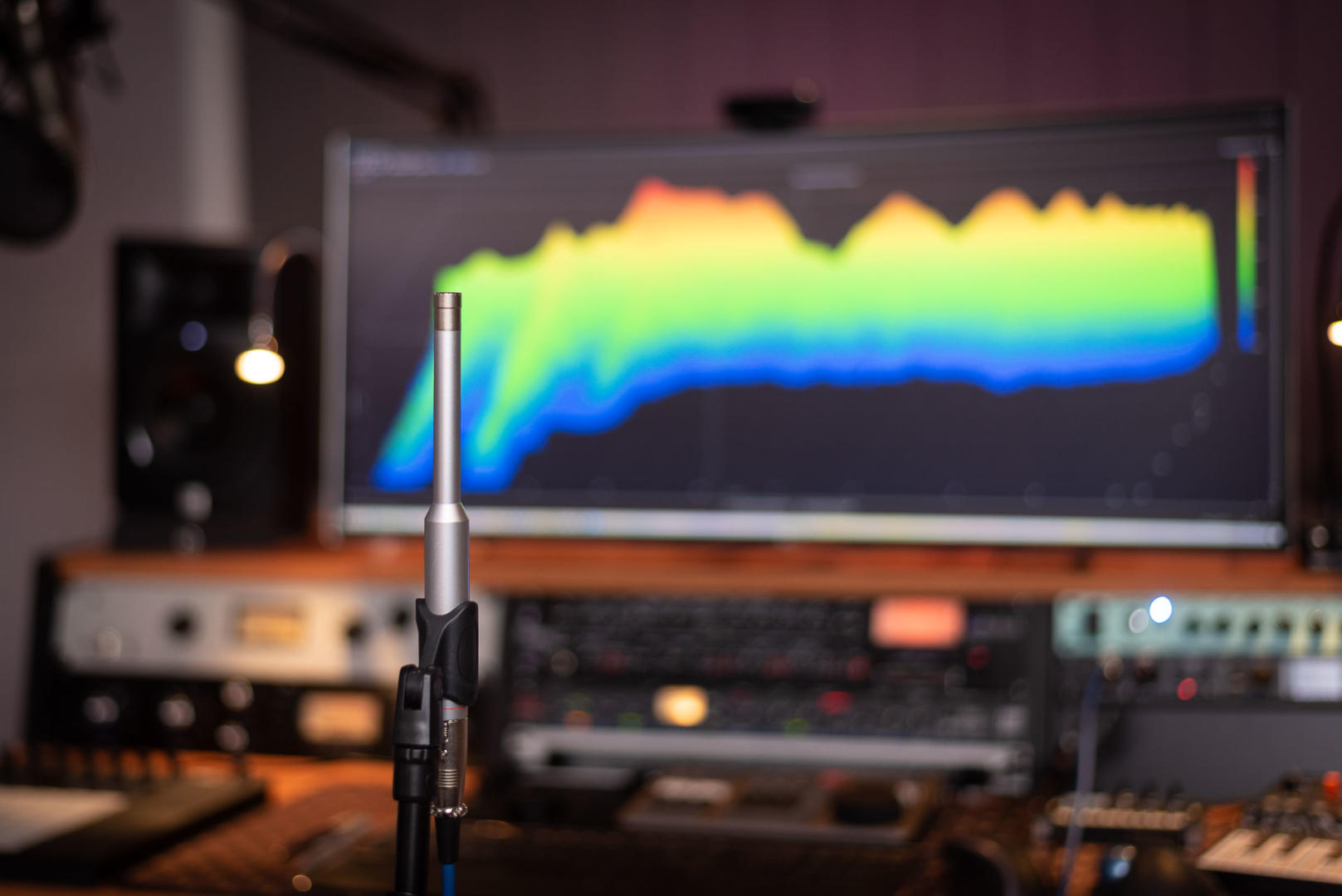
Even after the first measurement, you will realize that the frequency response and the reverberation time are usually far beyond the requirements. Reverberation times in the region of 2 seconds are not uncommon (especially below 100 Hz) and the frequency distribution has peaks and troughs. Frequencies in the bass range from 100 Hz downwards are particularly difficult to get under control.
Incidentally, rooms with dry walls have a certain advantage here, as these walls act like a spring-mass system and therefore remove acoustic energy from the room in the critical low-frequency ranges. To achieve this, the sound must be able to penetrate easily into an insulating medium and be absorbed by it. The length-related flow resistance is important here. For Basotect, this is 14 kPA*s/m2. Mineral fibreboards, on the other hand, often have a flow resistance of less than 10 kPa*s/m2. BASF developed Basotect primarily to improve speech intelligibility, and it also has a downward effect in thicker versions up to a maximum of 200 Hz. Many of the edge absorbers made of melamine foam on offer usually have little effect below 500 Hz. Their dimensions are too small and the flow resistance too high.
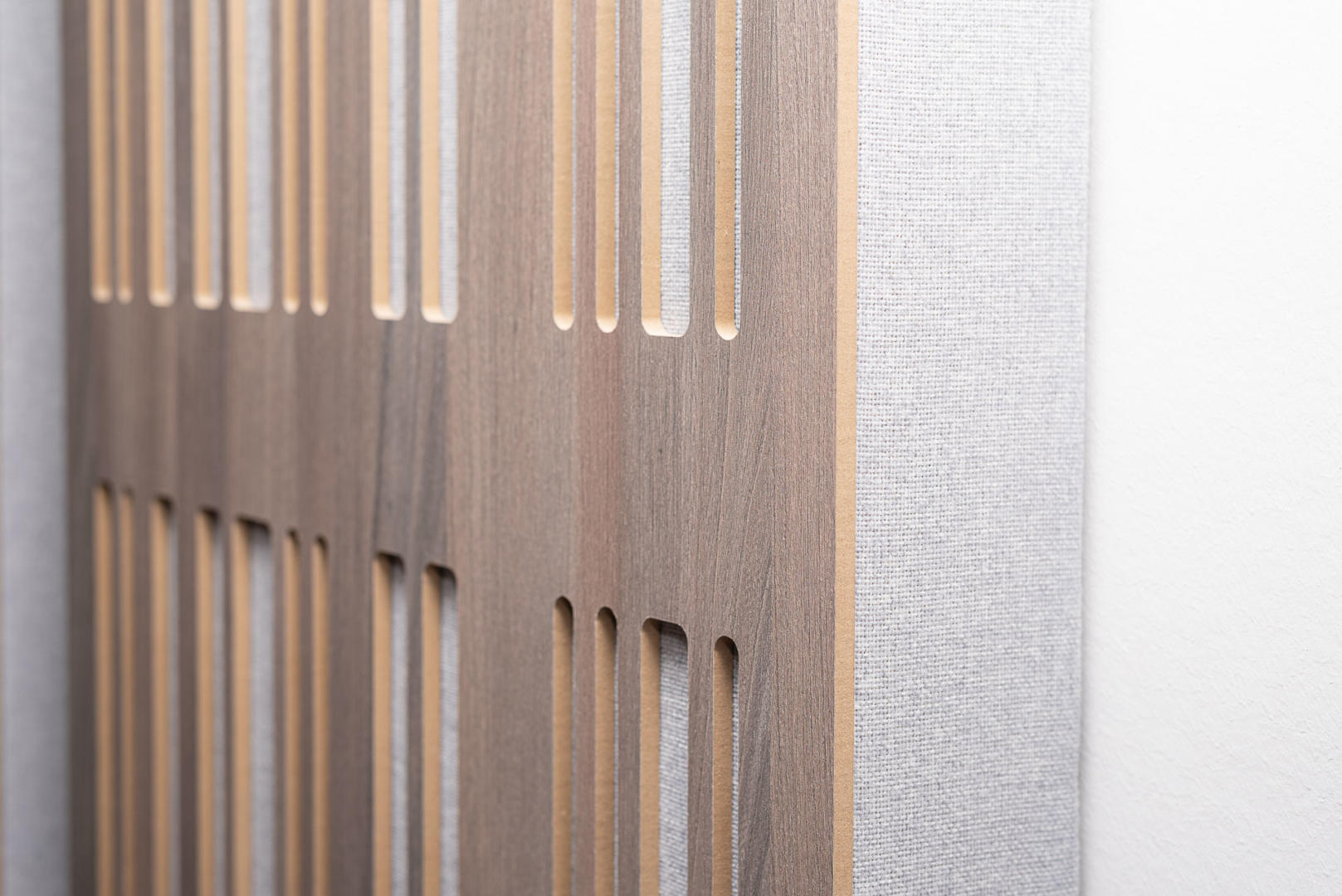
The higher the frequency, the easier (and cheaper) it is to tackle problems with targeted acoustic construction measures. You can frequently see funny pyramid foam panels stuck to the wall, especially with YouTubers, but they only really work in the very highest frequency ranges and this is where there are often the fewest issues – on the contrary, this is where you want less absorption. These foam panels can do absolutely nothing to counteract the unwanted reverberation in the relevant and critical frequency range from 100 Hz to around 4 kHz.
If you want to effectively optimize your studio or a room for voice recordings, you have to rely on special absorbers and their suitable position in the room. The task of absorbers is to remove as much energy as possible from the sound waves. Due to the long wavelength of low frequencies, absorbers must also be relatively thick for this range.
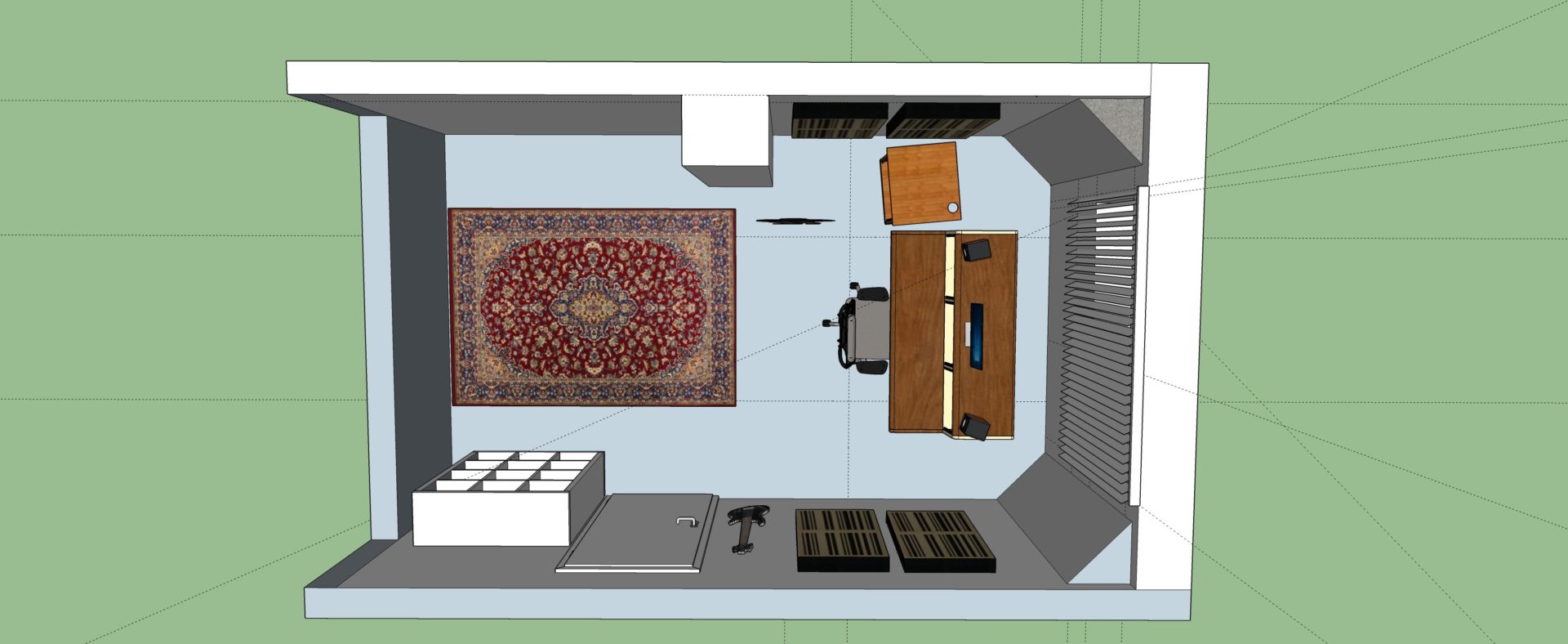
You also have to realize that you can only achieve the best results if the setup is based on the acoustic conditions. I also made several attempts. In the end, the recommendation was: symmetrical setup. Table on the opposite side. Distance from the wall etc.
Acoustic absorbers, bass traps and acoustic panels from GIK Acoustic
My choice fell on the products from GIK Acoustics. The US manufacturer, which also has a production facility in Europe, offers many panels, bass traps, absorbers and diffusers to tackle the whole range of room acoustics problems. The components not only look stylish, but can also be customized and remain affordable. The absorbers from GIK Acoustics are filled with mineral fibre panels, which can also absorb the energy of low frequencies thanks to their optimized flow resistance.
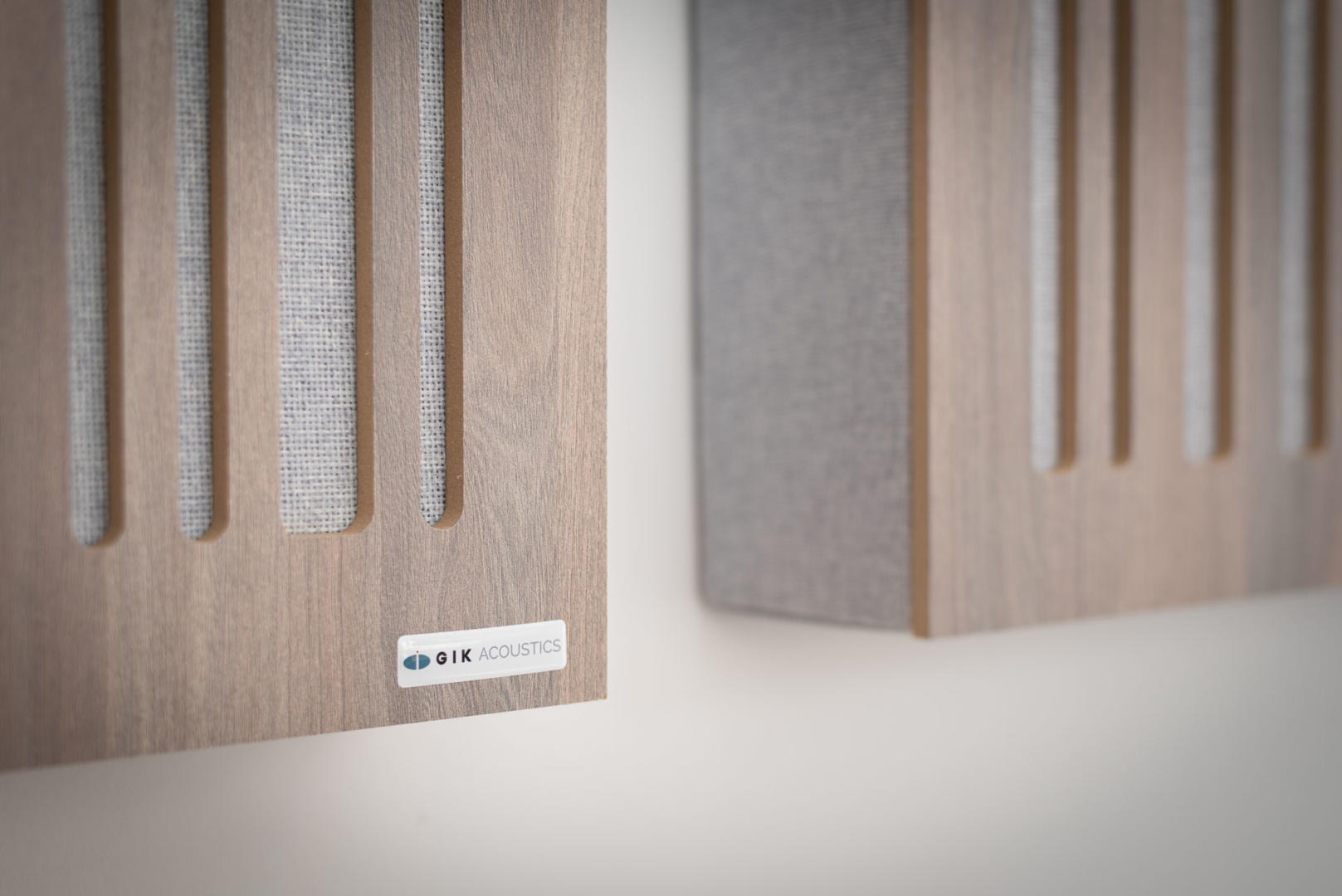
GIK Acoustics offers a freeanalysis and planning service. With the GIK Room Acoustic Visualiser, you can easily draw your room and its dimensions and place panels. You can then send this plan, together with a measurement from the REW or AudioCarma mentioned above, to the specialists at GIK. A few photos are also always welcome.
In my case, Lukas from GIK took care of my planning and gave me numerous valuable tips. He then suggested which elements would make sense for my situation:
2 acoustic absorbers from the Alpha series with a thickness of 100 mm on each side next to the listening position to attenuate the initial reflections from the monitor speakers. The slotted wooden front effectively dampens frequencies in the range from 100 to 3000 Hz with 0.8 sabine/units. At the same time, high frequencies are scattered by the shape of the front panel, which creates a better diffuse field. It therefore also acts as a diffuser, resulting in a natural spatial impression at the listening position. Incidentally, you can choose the pattern and wood color to suit your personal preferences. You are also spoilt for choice with over 100 different fabric colors and qualities.
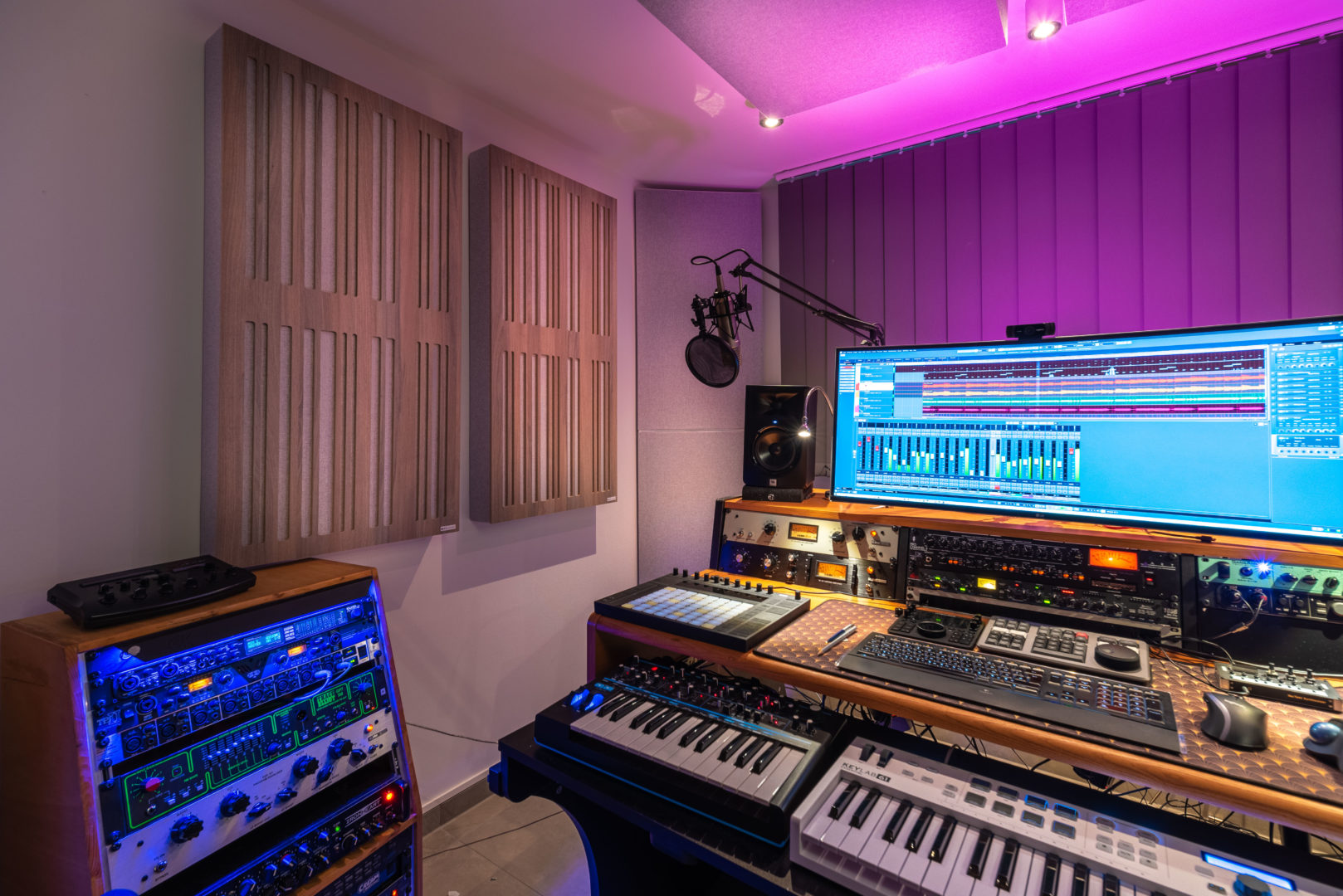
Two 244 acoustic absorbers hang above the listening position to reduce standing waves and reflections in the ceiling area and to optimize the acoustically unfavorable behavior of the relatively low concrete ceiling. The distance of around 10 centimeters between the top of the panel and the ceiling also means that the panels have an even better effect in the lower frequency range.
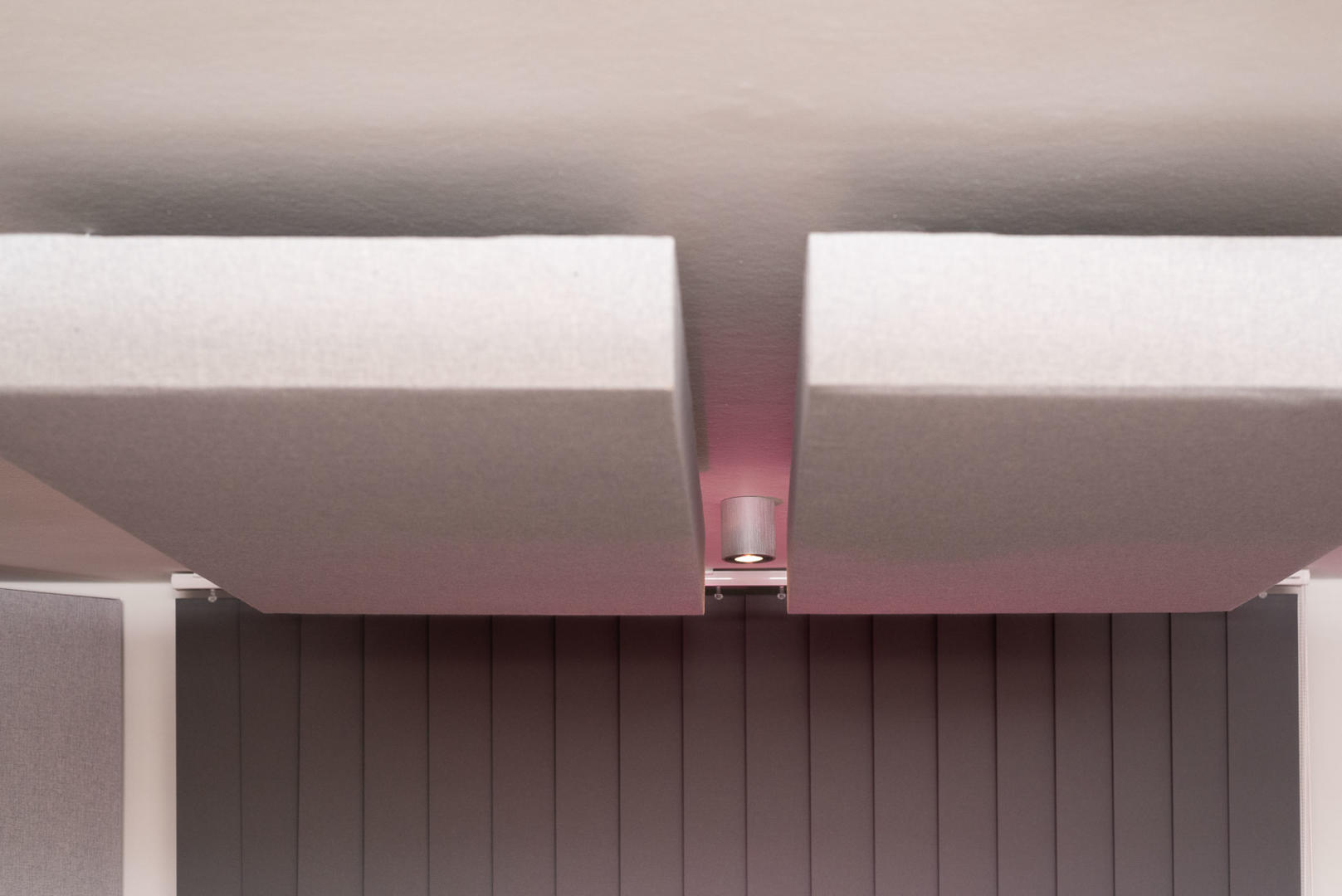
I treat the bass range with the GIK Tri-Trap bass traps . This is one of the most important measures because the high-energy bass frequencies cause the most problems and can only be brought under control with large absorbers. My room is 231 cm high, so two of the standard Tri-Traps with their 120 cm height don’t fit on top of each other. Fortunately, GIK Acoustics also offers customized sizes for a moderate surcharge. So I was able to stack the Tri-Traps up to the ceiling. In the corners where several walls meet, standing waves are extremely amplified. Just let some bass-rich music play and hold your head in the corners of your room.
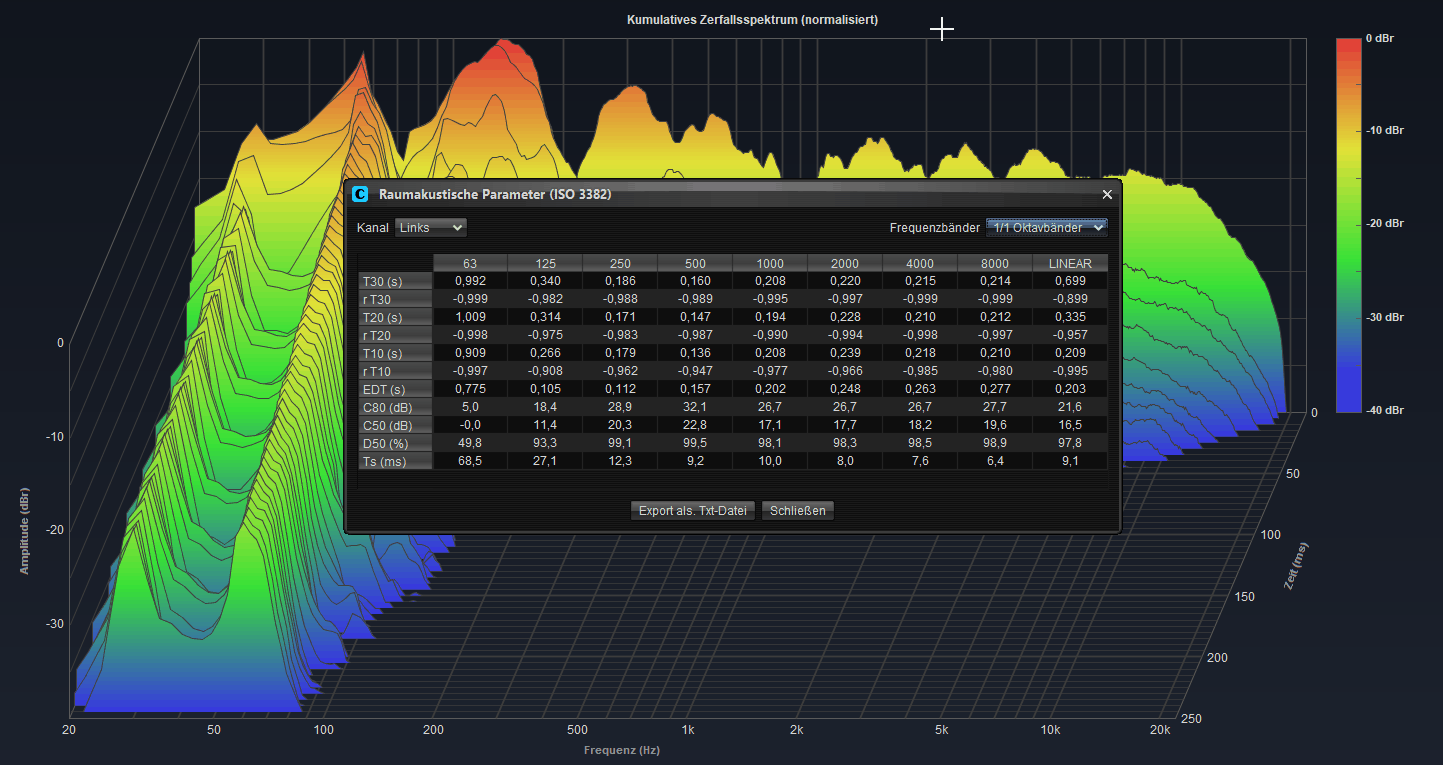
The GIK Tri-Traps are already fully effective from around 80 Hz and reach their maximum absorption at around 120 Hz. It is best to position the Tri-Traps ceiling-high in every corner of the room.
The result of the acoustic measures with GIK absorbers
With this configuration, I was able to reduce the reverberation in the important areas to 0.25 seconds. The frequency response is balanced and the reproduction accuracy of my monitor speakers increased significantly. You are no longer tempted to boost or cut the bass range because you misjudge it due to poor acoustics in the room. The localization of individual sound sources in the mix has increased remarkably – with the same monitors. Bass sounds tight and crisp, and the mid-range is very detailed.
There is still a standing wave at 63 Hertz – it is probably the resonance of the concrete ceiling, which is very typical for this component. This resonates and also causes correspondingly high RT60 times in this range, which can also be determined by feeling. I will try to extract some energy from this area using a Helmholtz resonator. However, this frequency is not really disturbing in practice

I can now also make voice and guitar recordings that sound professional. If you have to plan under less than ideal conditions anyway, because the room is too small for natural acoustics, it makes more sense to ensure that there is little reverberation so that it can be added artificially and controllably later in the mix.
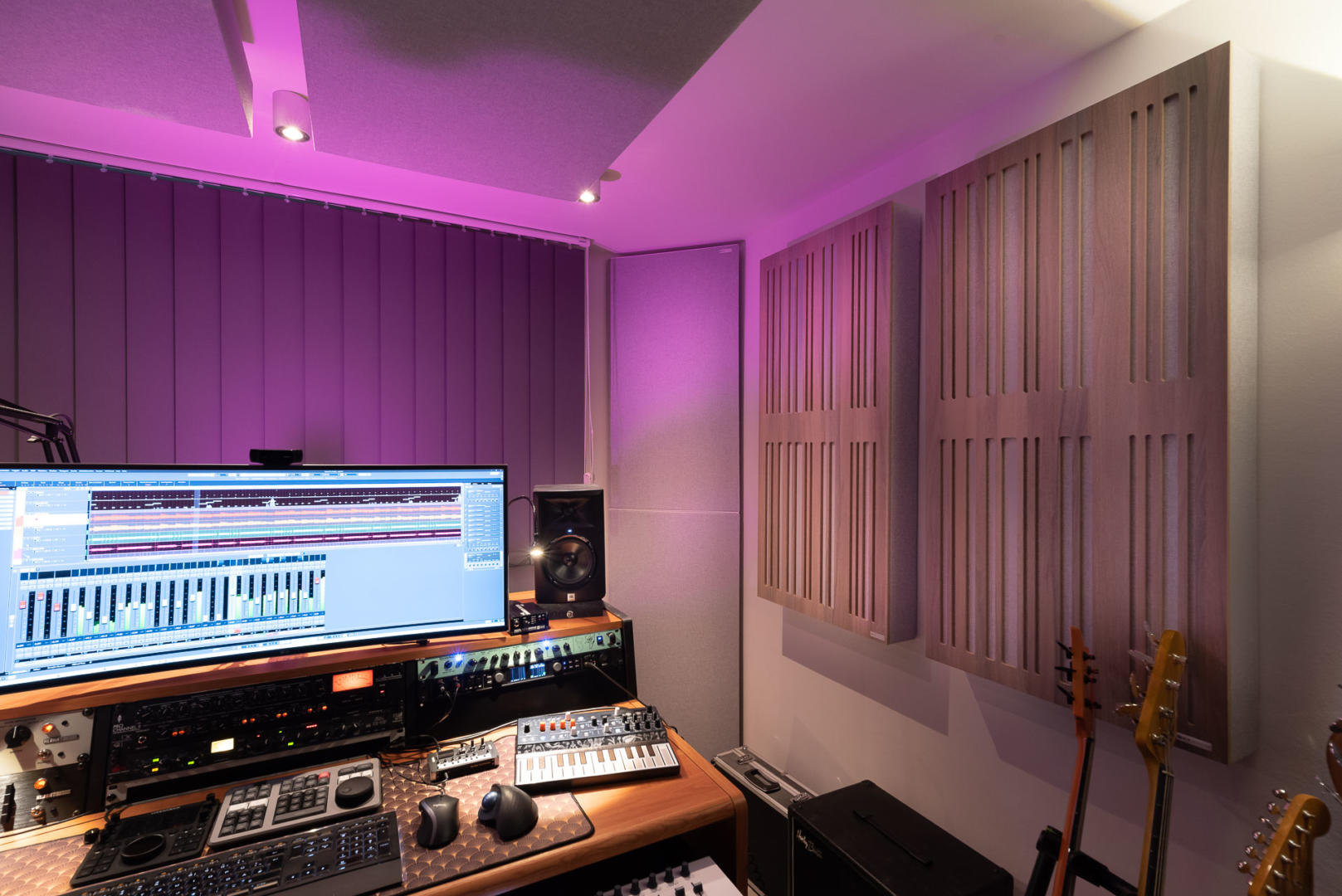
The price for 8 Tri-Traps for 4 room corners, 4 4A Alpha Absorbers measuring 60 x 120 cm and 10 cm thick and 4 244 bass traps is 1522 euros. At first glance, that’s a lot of money, but it’s also the best investment you can make for a good and reliable sound in the studio. The absorbers were installed in no time at all, as appropriate brackets are supplied for wall mounting. Special brackets are available as accessories for ceiling mounting. I decided in favour of mounting with steel cables.
Of course, you can also build your own absorbers. However, the acoustic material, insulation panels, wood and, finally, the time required add up considerably and in the end, there is no guarantee that the DIY absorbers will have the desired effect. However, the effectiveness of the GIK Acoustics absorbers has been independently confirmed, and they look professional, which also increases the WAF (Women Acceptance Factor) 😉

If you want to improve the cinema sound in your living room, GIK Acoustics offers chic absorbers with a highly customizable look that should fit in well with most living situations. Stylish acoustic pictures are also available. These are absorbers that are “disguised” as a mural. You can either choose your motif from a library of 1.4 million photos, or upload your own. These acoustic pictures are also suitable for the acoustic optimization of conference rooms or lounges.
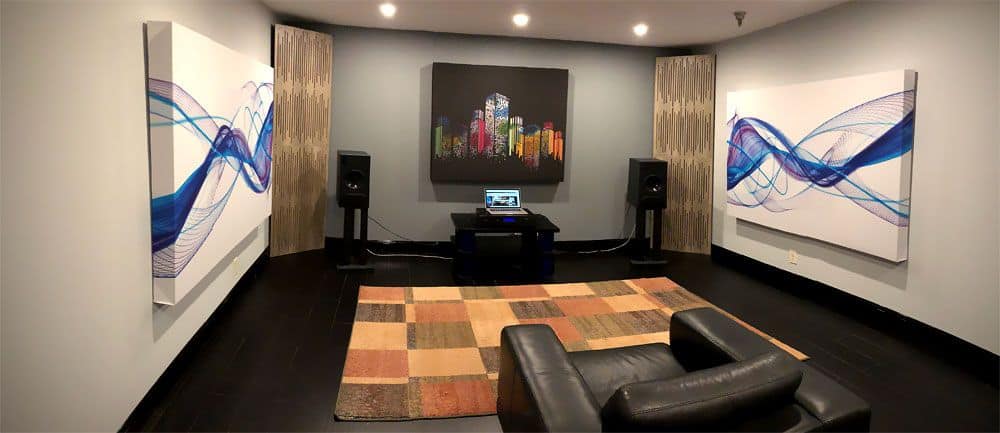
In my case, the effort and investment were definitely more than worth it. And the new studio is now my favorite room in the house, which I also use for video conferences because the acoustics – in terms of the structural requirements and the relatively low outlay – are simply perfect.
More info: GIK Acoustics website
(*) This article was produced with the kind support of GIK Acoustics and the provision of test samples.


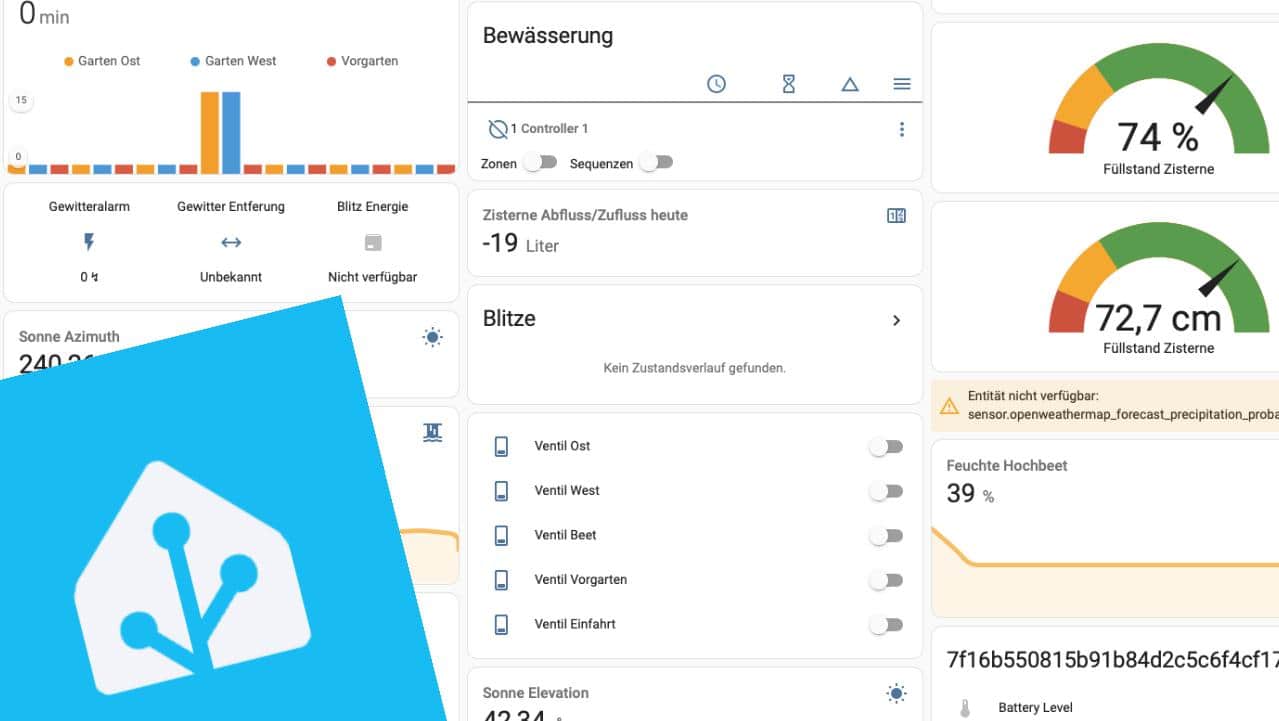

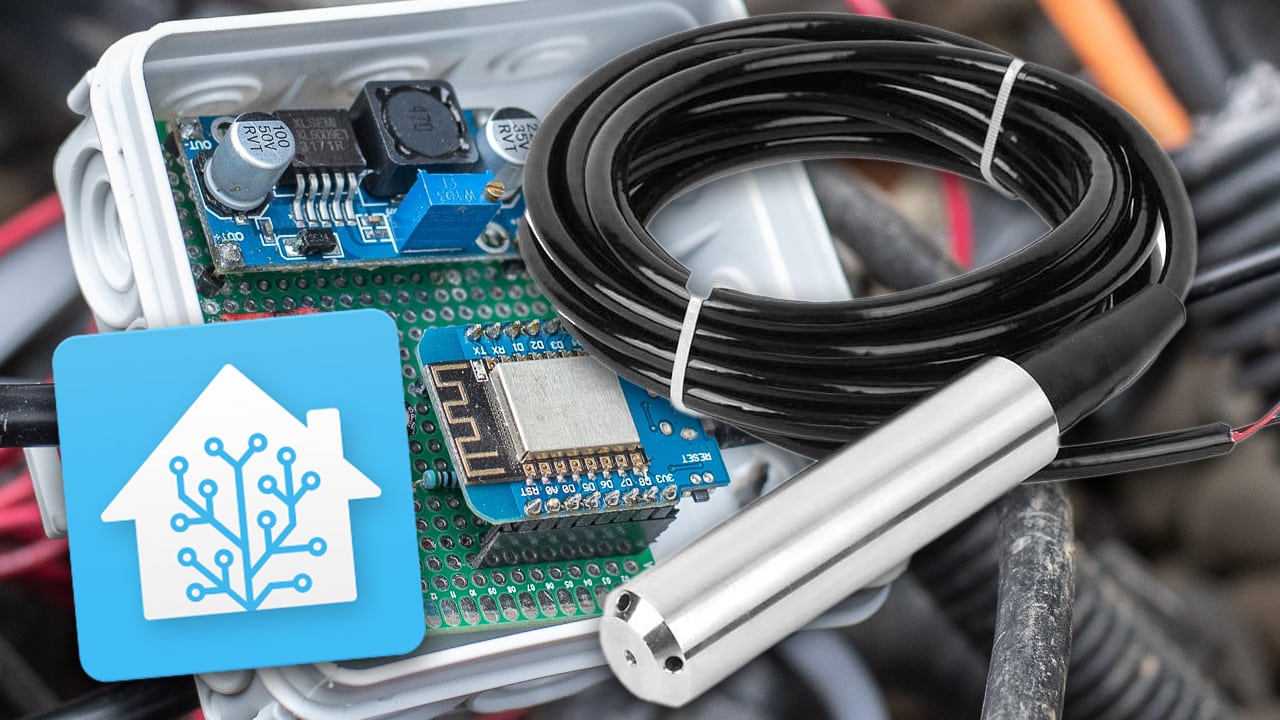
Leave a Reply